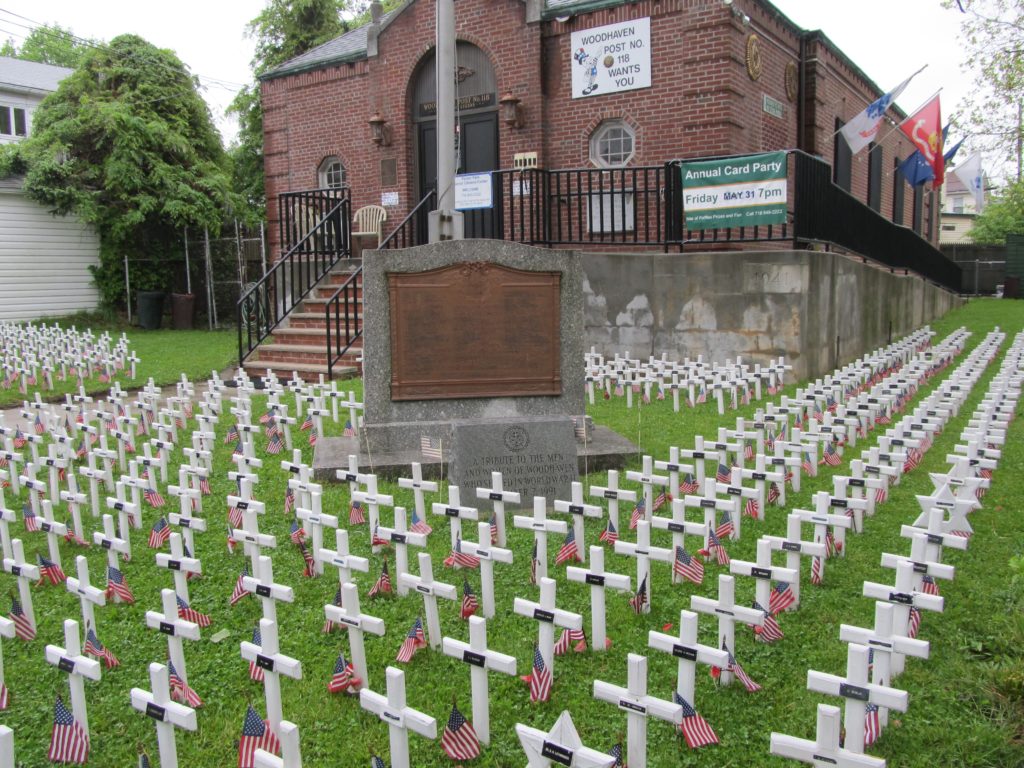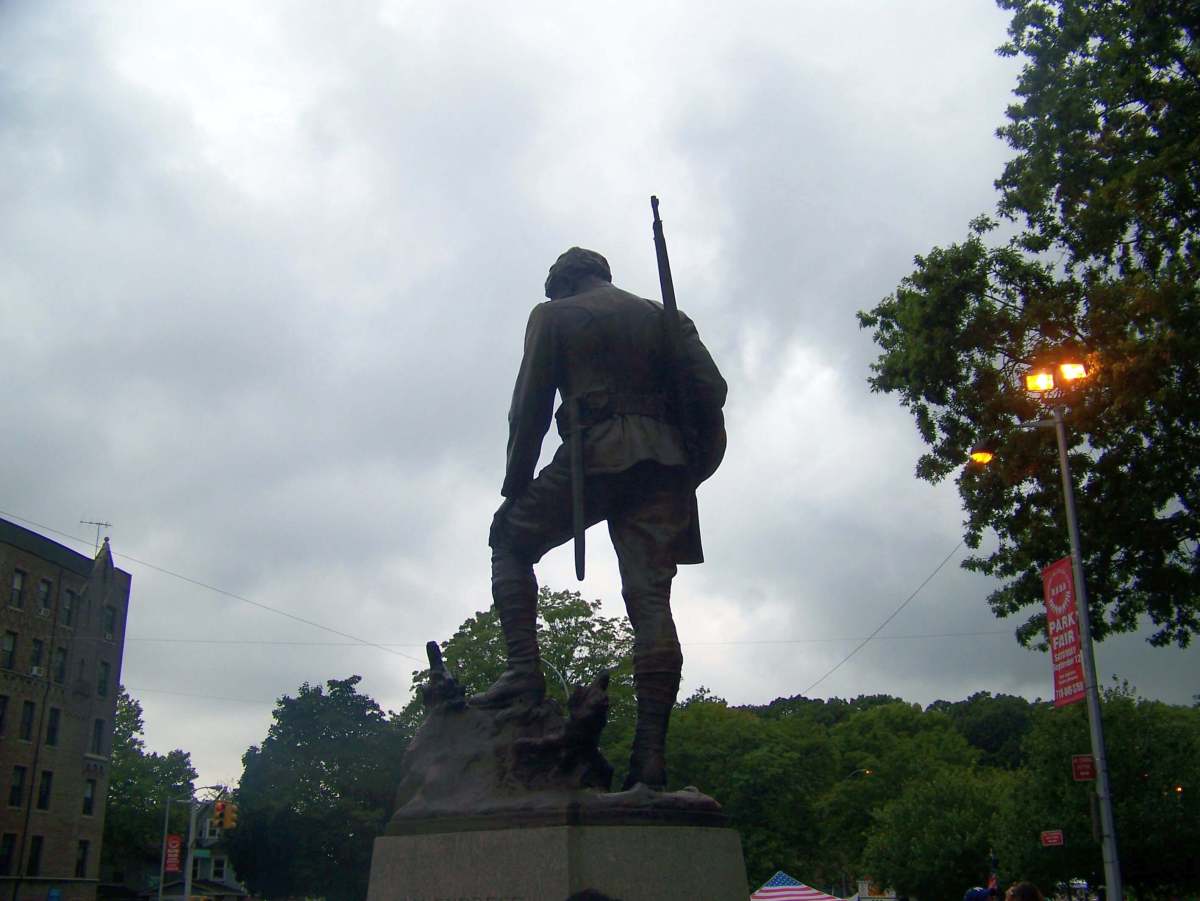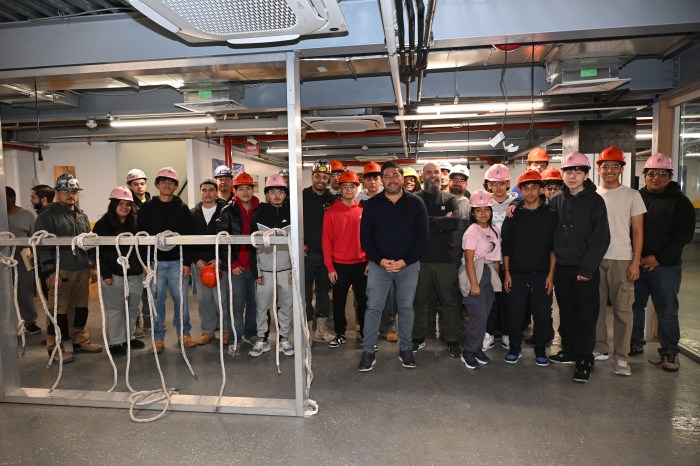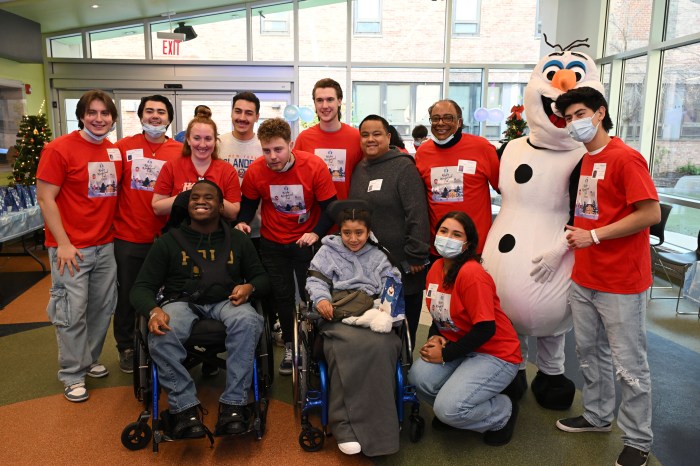Though the United States joined the World War I in April of 1917, it wasn’t until later in the year that we saw our local boys go off to war with rousing support from an almost enthusiastic public. But by May of the following year, the war began to take its toll on the locals of Woodhaven and Richmond Hill.
At first, there were a few isolated casualties. But as the weeks wore on, residents would nervously look at each week’s headlines to see the latest news and grim announcements that more local boys had been killed.
In November 1918, peace was declared but slow lines of communications kept local families on edge for a few more weeks and months as the final list of casualties were produced. Eventually, it was determined that nearly 140 young men from Woodhaven and Richmond Hill lost their lives in what would become known as “The Great War.”
After the war ended, communities around the country were looking for ways to memorialize the sacrifices of the young men who never came home. In Forest Park, one oak tree was planted for each of the young heroes.
In the days leading up to each Memorial Day, the ladies of the American Legion Auxiliary would decorate the trees in red, white and blue ribbons. Friends and family of the fallen soldiers that the trees were dedicated to would leave notes and flowers at “their” tree.
However, this tradition faded away in the early 1940s and the purpose of the trees in Forest Park Drive was forgotten for nearly 75 years. In recent years, local groups and organizations have revived this tradition in memory of the soldiers of WWI.
In Woodhaven, another World War I monument was eventually erected on 84th Street and 89th Avenue in memory of Lieutenant Clinton L. Whiting, who was killed in the Argonne Forest in France leading his men to safety and died just days before peace was declared.
The local VFW was also named after the young lieutenant and Whiting Square became a start and end point for Memorial Day Parades during the ’40s and ’50s. Known locally as “The Rock” for the large boulder that sits at the base of a flagpole, Whiting Square also boasted a large cannon, which was taken away for a metal drive during the subsequent World War in the 1940s.

Richmond Hill has a beautiful World War I monument in addition to their memorial trees. The Richmond Hill War Memorial (more popularly known locally as “My Buddy” or the “Buddy Monument”) was erected in 1925 in honor of the war dead.
The statue depicts a “doughboy,” an infantryman from World War I and at the base is a plaque with the names of the soldiers.
The Richmond Hill Historical Society will be hosting a ceremony on Sunday, Nov. 11, at the base of the Buddy Monument (Myrtle Avenue and Park Lane South) followed up by an exhibit at Msgr. Murray Hall (86th Avenue and 112th Street) from noon to 3 p.m.
There you will learn the history of the Buddy Monument, read letters from the soldiers and see lots of old photos. Admission is free and everyone is welcome.
The Woodhaven Cultural & Historical Society will be giving a memorial presentation a few days earlier, on Tuesday, Nov. 6, at 7 p.m. at The Avenue Diner, located at 91-06 Jamaica Ave. This presentation will tell the story of Woodhaven during World War I, with a focus on that very month 100 years ago, when the Great War came to an end.
Far too many young men from our communities lost their lives in that war a century ago. The communities of Woodhaven and Richmond Hill are making sure that their sacrifices do not go unnoticed.



































